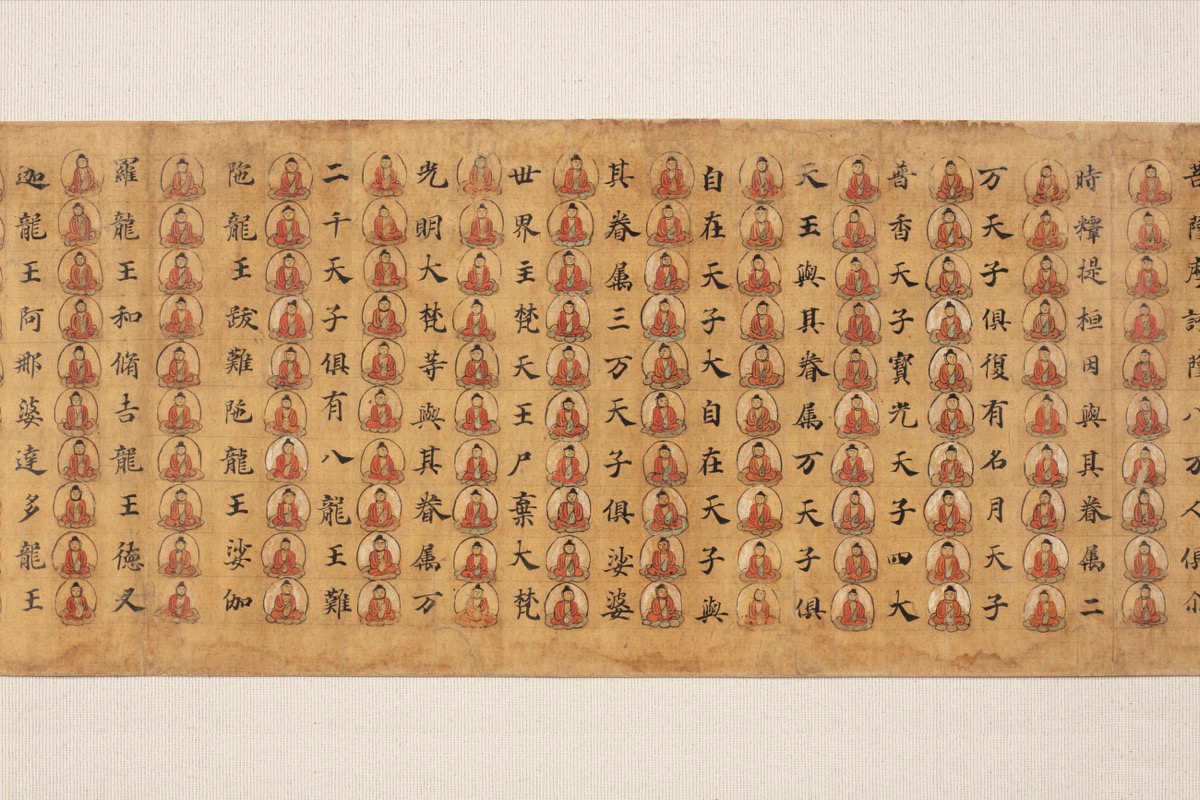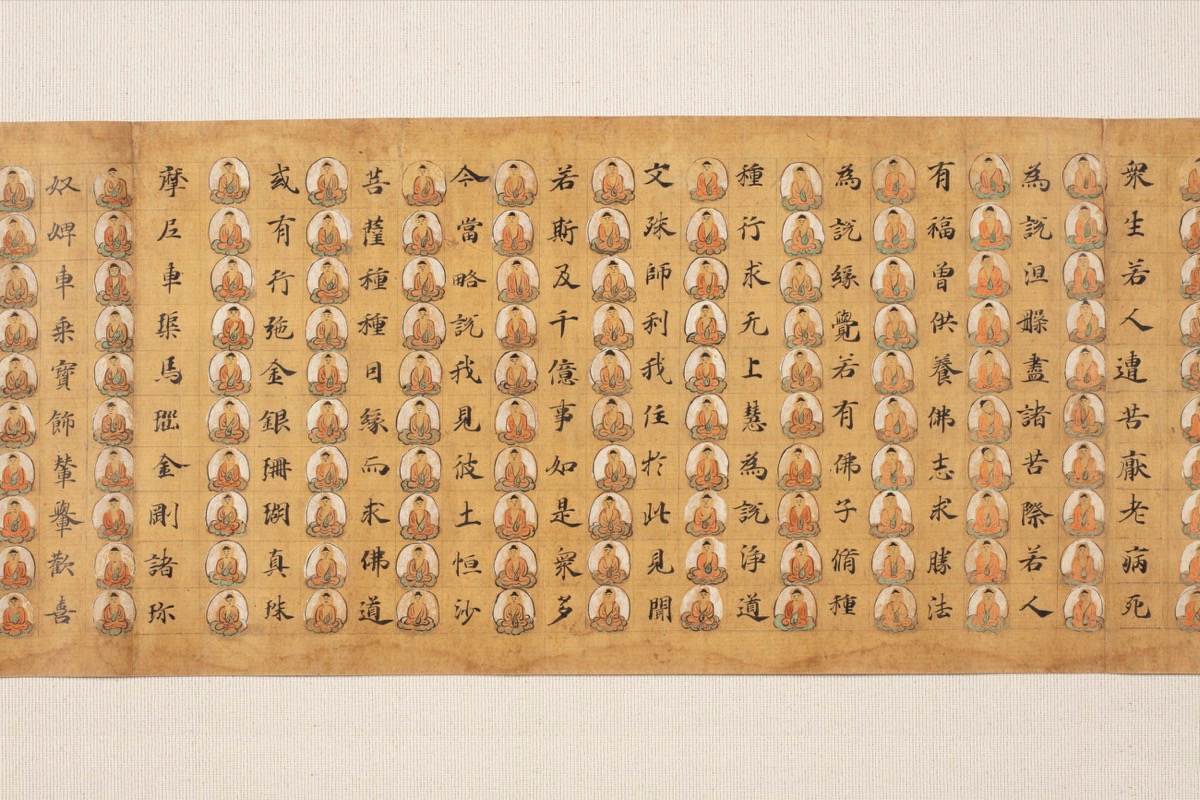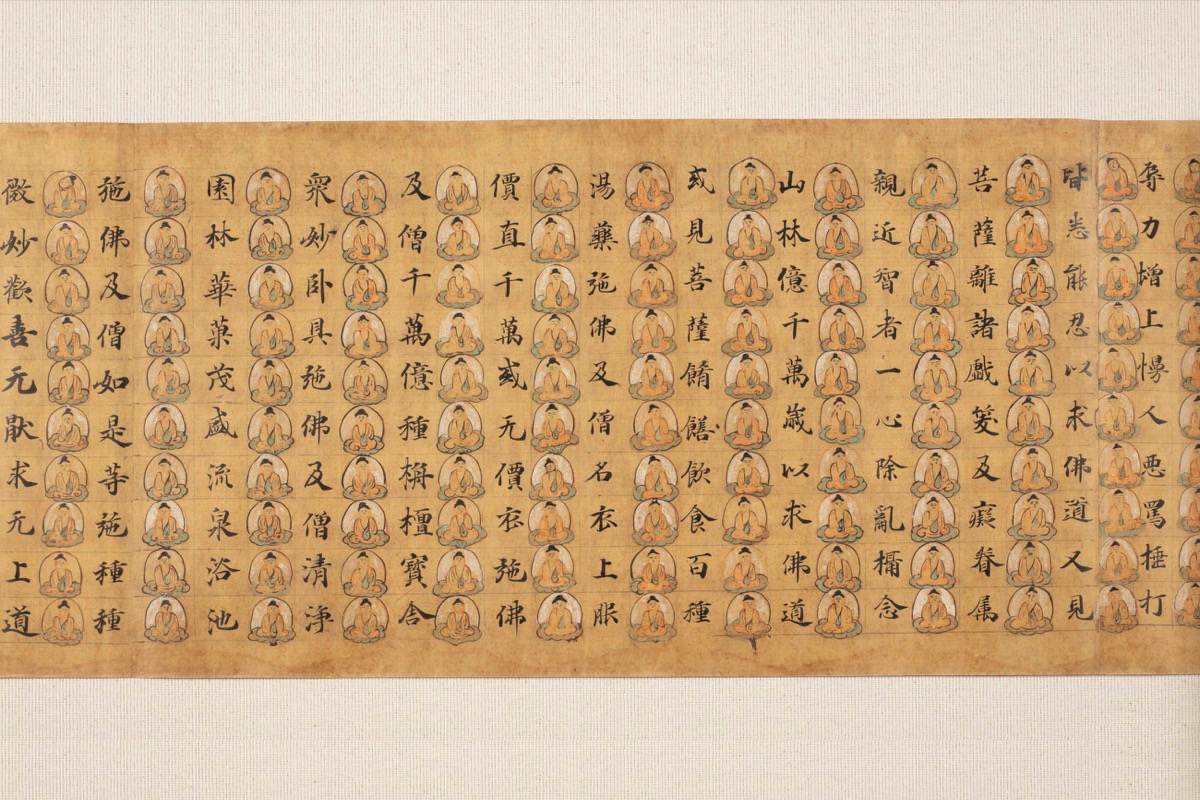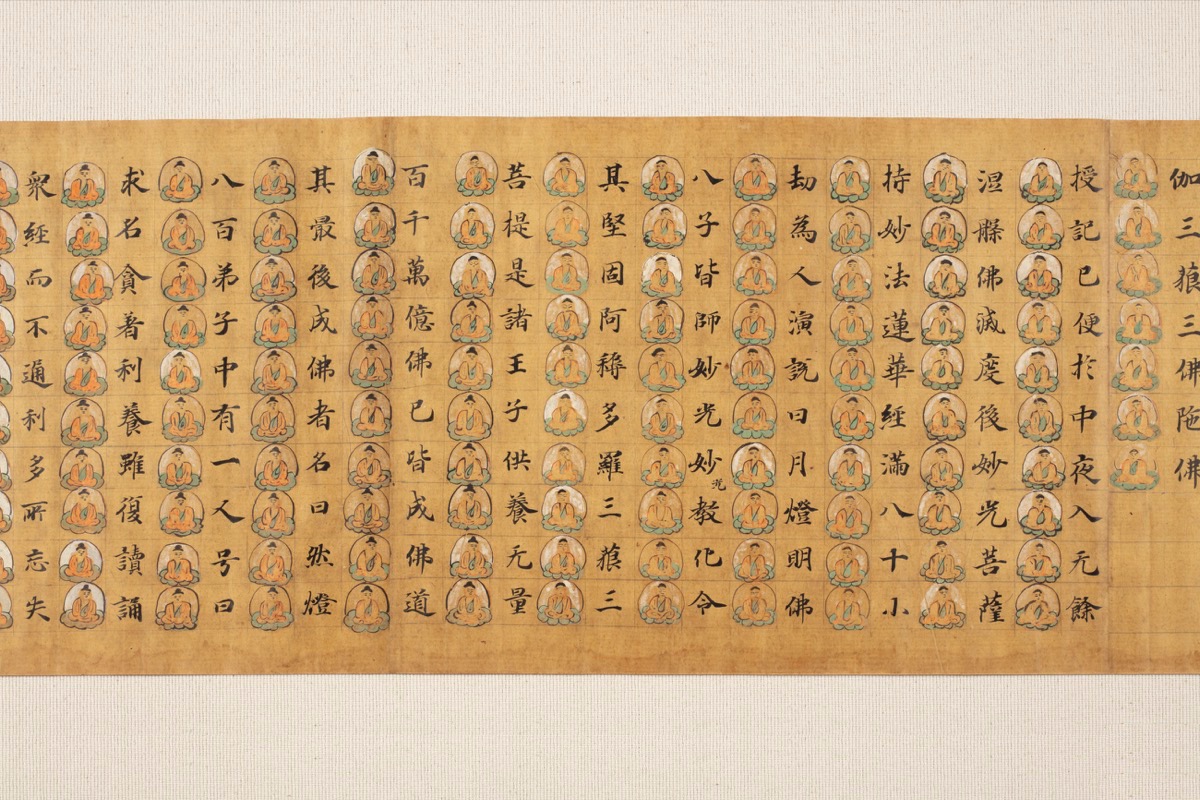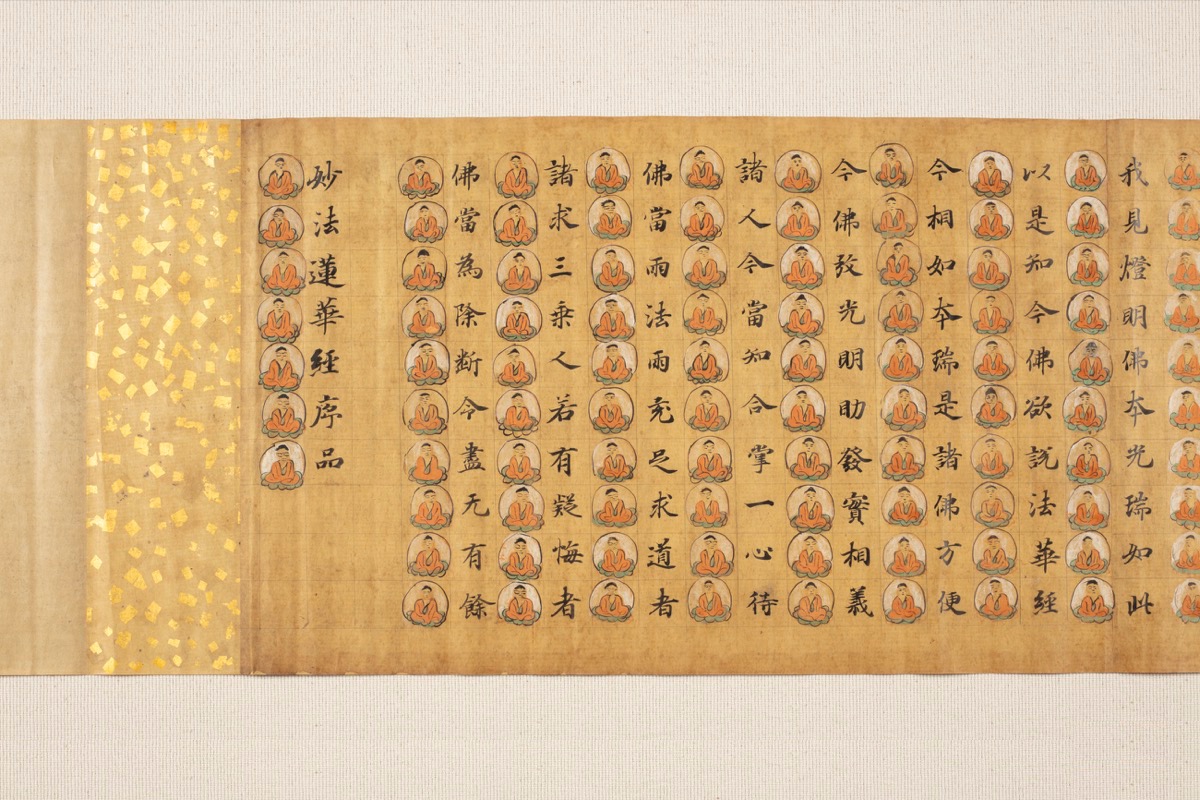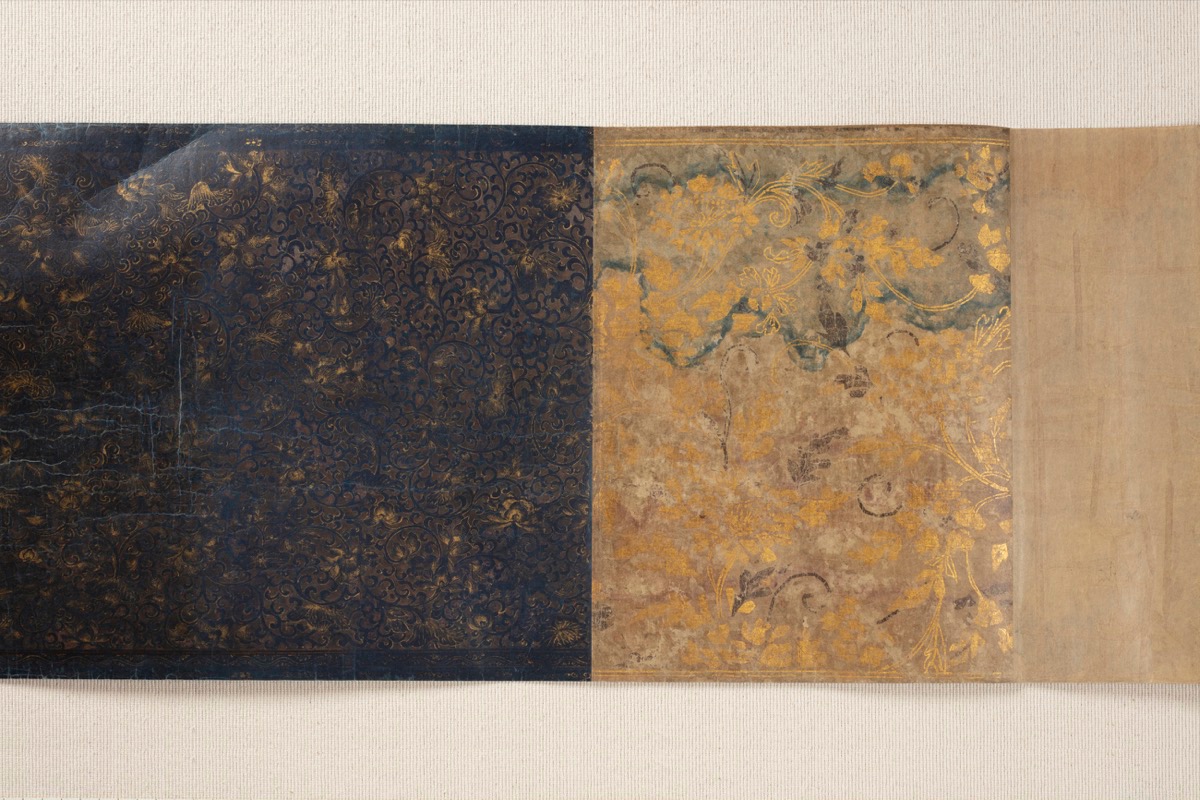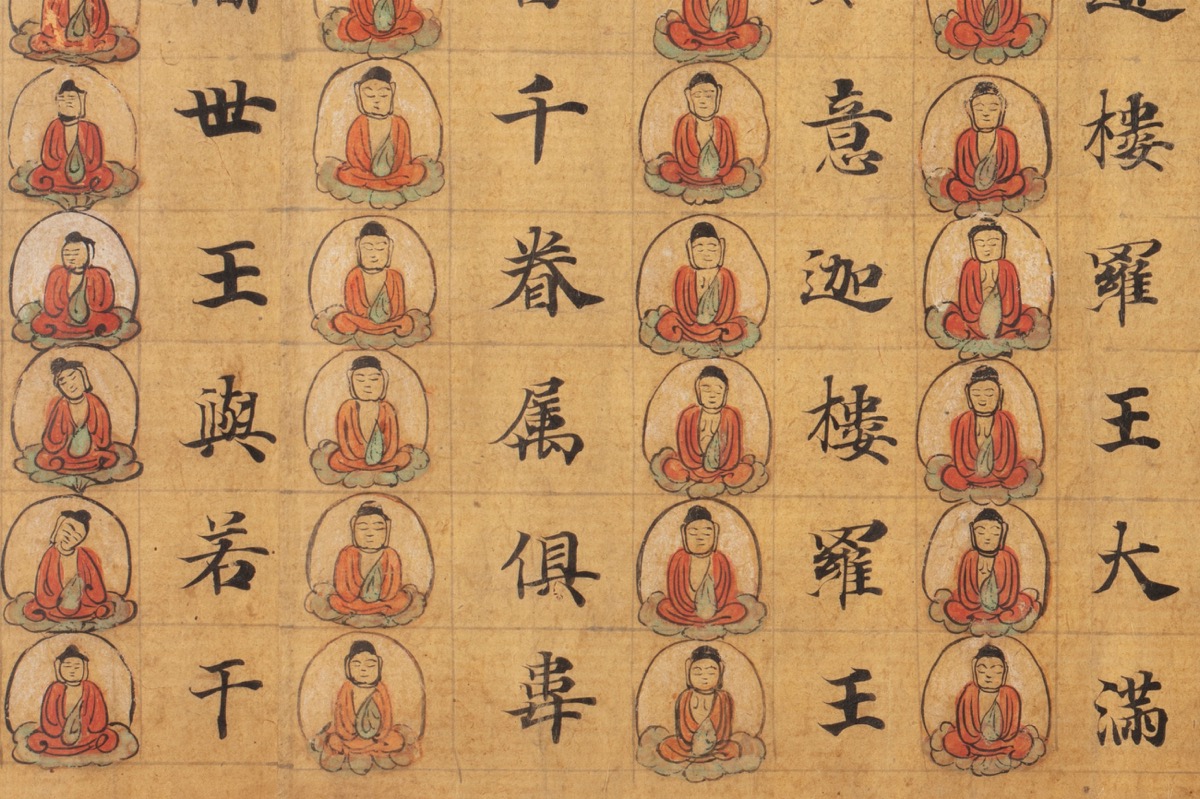Ichiji Ichibutsu Hokekyo JobonPreface to the Lotus Sutra Decorated with Buddhas
| District | Arts and Crafts | Period | ー |
|---|---|---|---|
| Set Content/Set Date | National Treasure(Writing)・西暦1953.11.14 | ||
| Owner | Zentsuji Temple | Location | 3-3-1 Zentsujicho, Zentsuji, Kagawa |
The Lotus Sutra is a Buddhist scripture that was transmitted from China to Japan. The sutra consists of 28 chapters on eight scrolls. This Preface to the Lotus Sutra contains ten characters per line (vertical) written on high quality creamy yellow paper, with carefully drawn images of the Buddha for each character of the sutra text on the following line. Sutras written with alternating scripture and images of the Buddha are called kyobutsu koshokyo and are found only in the Dunhuang Manuscripts of China, with no confirmed examples within Japan.
The sutra is written in a rather old-fashioned block print, with the sketches of the Buddha drawn in vermilion red then traced over with black ink after coloring. All Buddhas are drawn draped in red garments and sitting on a white lotus, with white round light behind them. Their facial expressions and postures are not uniform, but rather brim with individuality and freedom.
According to "Reibutsu Takaramono Mokuroku" (1696), Kobo Daishi (Kukai) transcribed the Sutras and his mother Princess Tamayori drew the Buddha, but the shape of the characters indicates that the sutras were transcribed in the middle of the Heian Period (794-1185). The frontispiece at the beginning was added later and is called “Zentsuji Miei”. It is painted in gold on paper dyed navy blue and depicts Kobo Daishi while practicing, as well as scenes showing the deep ties between Kobo Daishi and Zentsuji Temple.


